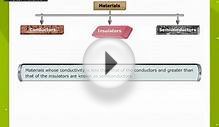Semiconductor technology took a giant leap forward during World War II, as radar receivers needed solid-state rectifiers to detect and convert microwave signals at frequencies higher than possible using vacuum tube diodes. Silicon and germanium emerged as the dominant semiconductor materials due to wartime R&D efforts. Following Russell Ohl's pioneering silicon work, (1940 Milestone) researchers at universities and companies in Great Britain and the United States developed techniques to purify both elements and “dope†them with selected impurities to obtain the semiconductor characteristics desired. Millions of crystal rectifier diodes, with a metal point contacting a tiny sliver of silicon or germanium inside, were fabricated for use in Allied radar receivers.
Under the auspices of MIT's Radiation Laboratory, silicon purification occurred mainly at the University of Pennsylvania, led by physicist Frederick Seitz, and Dupont Chemical Company. Silicon of 99.999 percent purity was available by war's end. Most germanium research occurred at Purdue University under Karl Lark-Horovitz. In 1947 Walter Brattain used a slab of the high-purity germanium developed at Purdue in fabricating the first, point-contact transistor.
Also crucial were research efforts at Bell Labs, led by metallurgist Jack Scaff (See photo at 1940 Milestone) and chemist Henry Theurer, to understand how various impurities led to n-type semiconductors with an excess of electrons and p-type semiconductors with a deficit of electrons (or excess of holes). By adding tiny amounts of elements such as phosphorus from the fifth column of the Periodic Table to pure silicon and germanium, they obtained n-type material. Adding third-column elements like boron gave them p-type.
- Scaff, Jack H. "Preparation of Silicon Materials, " U. S. Patent 2, 402, 582 (Filed April 4, 1941. Issued June 25, 1946).
- Ohl, Russell S. "Point Contact Negative Resistance Devices, " U. S. Patent 2, 469, 569 (Filed March 2, 1945. Issued May 10, 1949).
- Scaff J. H. and Ohl, R. S. "Development of Silicon Crystal Rectifiers for Microwave Radar Receivers", Bell System Technical Journal, Vol. 26, No. 1 (January 1947) pp.1-30.
- Torrey, Henry C. and Whitmer. Charles A. MIT Radiation Laboratory Series. Volume 15, Crystal Rectifiers (McGraw-Hill, New York, 1948)
- Johnson, V. A. Karl Lark-Horovitz, Pioneer in Solid State Physics, (New York: Pergamon Press, 1969).
- Bray, Ralph. "The Origin of Semiconductor Research at Purdue, " Purdue Physics, Newsletter of the Department of Physics, College of Science, Purdue University (1989).
- Seitz, Frederick. "Research on Silicon and Germanium in World War II, " . (New York: W. W. Norton, 1997) pp. 88-114.
- Seitz, Frederick and Einspruch, Norman G. Electronic Genie: The Tangled History of Silicon. (University of Illinois Press, 1998) pp. 89-150
RELATED VIDEO
